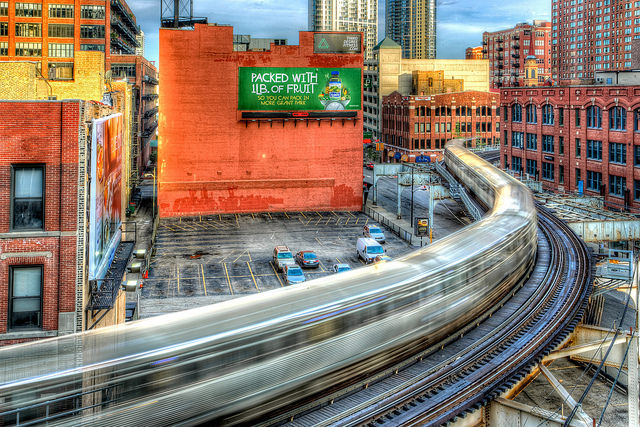New CTA Data Shows Big Ridership Jump On The Blue Line
By Sarah Gouda in News on Mar 30, 2016 5:35PM
Not since 1930 have things looked so good for the Chicago Transit Authority’s rail lines. According to new data from the CTA, per capita ridership is higher than it’s been in over 85 years, with the biggest increases occurring along the Blue Line.
How has Chicago CTA ridership changed 1998>2015? Growth downtown/North Side. Evanston/Skokie/South Side decline pic.twitter.com/dKwpC2l9gO
— Yonah Freemark (@yfreemark) March 29, 2016
On Tuesday, Yonah Freemark,a project manager at the Metropolitan Planning Council, released a map detailing the ridership changes from November 1998 to November 2015. The map shows largest increases have occurred along the Blue Line, with steady growth along the North Side Brown Line and Red Line stops as well. Given the business booms in Wicker Park, Logan Square, and Lakeview over the past 15 years, the popularity of these stations is unsurprising. As far as stand-out stations go, the Paulina Brown Line stop has seen a 66 percent increase in ridership since 1998 and the Green and Pink Line’s Morgan stop, which re-opened in 2013, steadily serves the burgeoning West Loop area.
Chicago Streets Blog reports that, while 145 CTA stations increased ridership since 1998, 12 stops saw a decrease in ridership. Those are mostly comprised of Purple and Yellow lines in Evanston and Red and Green Line stations along Chicago’s South Side. Freemark explained how the net population loss over the past decade contributes to those drops: “From 2000-2010, the City of Chicago lost almost 200,000 residents. That’s a huge number, and, unfortunately, a significant share of that loss occurred on the South Side of Chicago. The existence of a transit system by itself cannot prevent population itself.”
Chicago’s ongoing population decrease makes the overall growth numbers all the more impressive. In terms of total number of rides, the CTA’s recorded ridership is the highest it’s been since 1948—when the population of Chicago was much larger according to Freemark. Per capita, Chicagoans hop on the train about 73 times per year (the highest since 1930) and Freemark expects that to increase to 90 times per year by 2026.
“Based on current trends, we should add about 50 million additional annual boardings by 2026, bringing the total number to 250 million,” he says. That’s huge. As time goes on, the CTA will only continue to play a major part in the lives of Chicagoans.
Freemark gave the Chicagoist a brief overview of how the Metropolitan Planning Council plan to accommodate the CTA’s growing importance. “There are a number of transit-oriented development initiatives. We launched the program Grow Chicago as a way to increase the number of people living near transit lines, especially on the South Side. People who live near transit are much more likely to take it.” To facilitate this, Metropolitan Planning Council is pushing for additional investment in the transit system as a whole. On Monday, they will release a proposal for a state-wide transportation need figures at the City Club of Chicago.
